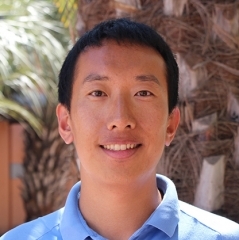
Date:
Location:
Speaker:
Title: "Impacts of Support Effects, Metal Structure and Pulsed Illumination on Heterogenous Catalysis"
Abstract: In this dissertation, we employed a multi-faceted approach, combing well-controlled synthesis techniques, a variety of characterization techniques, and Density Functional Theory calculations to understand and optimize the performance of heterogeneous catalysts. We investigated the effects of support composition, metal structure ranging from nanometer sized clusters to atomically dispersed species, and pulsed illumination on methanol carbonylation, ethylene hydroformylation, and methanol decomposition. These efforts highlight distinct approaches for controlling the rates and selectivities of catalytic processes on heterogeneous supported metal catalysts for reactions that are primarily performed using homogeneous catalysts.
In the first effort, we experimentally and theoretically analyzed the influence of oxide support composition on the reactivity and selectivity of atomically dispersed Rh active sites for gas phase heterogeneous alkene hydroformylation. It was observed that supports act as ligands that control charge transfer to adsorbates bound to Rh active sites. Zeolite supports optimized the charge state of adsorbates on Rh active sites, resulting in 50x promotion in reactions rates at 50% promotion in selectivity for ethylene hydroformylation as compared to Al2O3 supports.
In the second effort, we elucidated the influence of active site structure on methanol carbonylation reactivity and selectivity in an iodine free, gas phase process. Experimental studies examined relationships between the structure of noble metal (Rh) and acidic metal oxide acidic active sites (ReOx and ZrO2) on function for methanol decomposition to form CO/CO2, methanol dimerization to dimethyl ether (DME), and methanol carbonylation to form acetic acid (AA). These studies revealed that isolated metal active sites paired with isolated acidic active sites minimized unwanted by product formation (CO/CO2/DME) and promoted the rate and selectivity of acetic acid production. The optimal catalyst, consisting of atomically dispersed Rh and ReOx active site pairs on SiO2, exhibited AA production rates comparable with industrial homogeneous catalytic processes and stable performance of > 93% selectivity to AA at > 60% per pass conversion.
Finally, we examined the influence of pulsed visible light illumination on the reactivity of SiO2 supported Pt catalysts for methanol decomposition to produce H2. Pulsed illumination of the operating catalyst with frequencies consistent with kinetic turnovers (~ 1-5 kHz) more efficiently promoted reaction rates than continuous illumination. The influence of light was also observed to be chemically specific, promoting the rate of certain elementary steps more significantly than others. These results suggest that the use of light pulses to dynamically control the energetics of elementary steps on catalytic metal surfaces may enable higher activity or selectivity than is possible with static illumination or dictated by linear free energy scaling relations.
Committee Chair: Prof. Phillip Christopher



